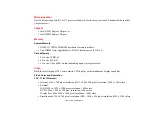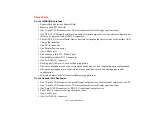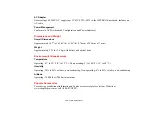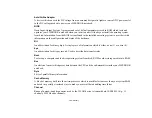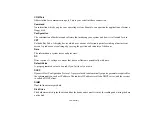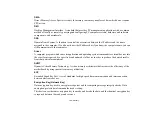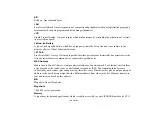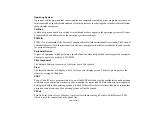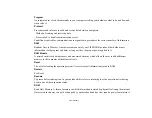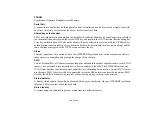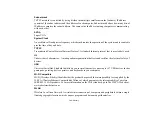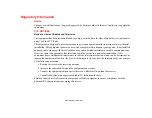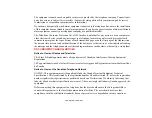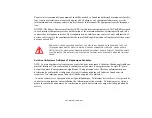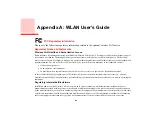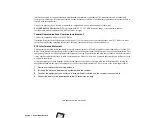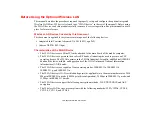
137
- Glossary
IEEE802.11n
Wireless LAN standard using multiple data streams supporting a maximum data rate of 450 Mbps.
802.11n devices operate in both the 2.4 GHz and 5 GHz UNII bands and are backward compatible with
802.11g and 802.11a.
Infrastructure
A name of a wireless LAN configuration. This type of communication uses an access point. Another type
of communication is called Ad Hoc.
IP Address
An identifier for a computer or device on a TCP/IP network. Networks using the TCP/IP protocol route
messages based on the IP address of the destination. The format of an IP address is a 32-bit numeric
address written as four numbers separated by periods. Each number can be zero to 255. For example,
1.160.10.240 could be an IP address.
Within an isolated network, you can assign IP addresses at random as long as each one is unique. However,
connecting a private network to the Internet requires using registered IP addresses (called Internet
addresses) to avoid duplicates.
The four numbers in an IP address are used in different ways to identify a particular network and a host
on that network. Three regional Internet registries -- ARIN, RIPE NCC and APNIC -- assign Internet
addresses from the following three classes.
Class A - supports 16 million hosts on each of 126 networks
Class B - supports 65,000 hosts on each of 16,000 networks
Class C - supports 254 hosts on each of 2 million networks
The number of unassigned Internet addresses is running out, so a new classless scheme called CIDR is
gradually replacing the system based on classes A, B, and C and is tied to adoption of IPv6.
IRQ
Interrupt Request. An acronym for the hardware signal to the CPU that an external event has occurred
which needs to be processed.

